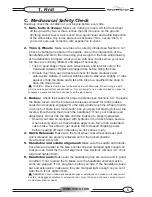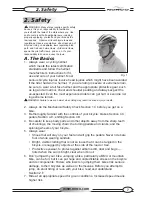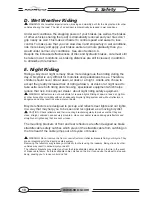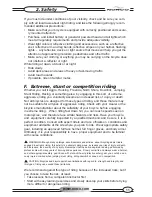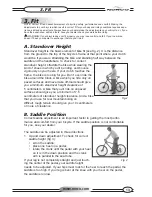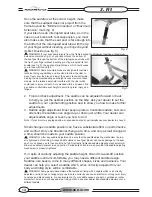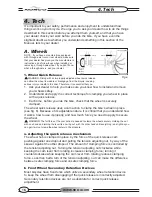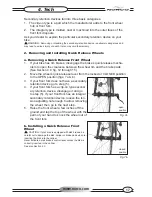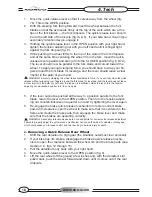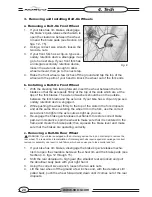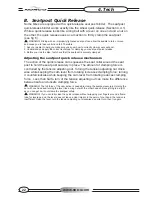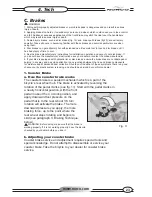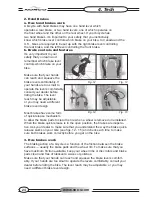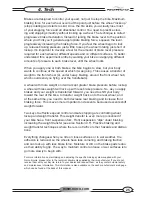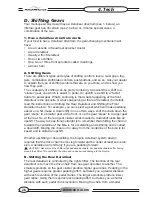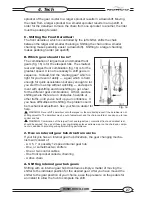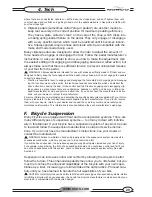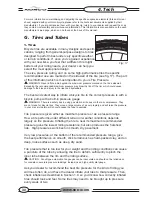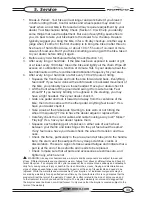
www.norco.com
18
1. Move the quick-release lever so that it curves away from the wheel (fig.
7b). This is the OPEN position.
2. With the steering fork facing forward, insert the wheel between the fork
blades so that the axle seats firmly at the top of the slots which are at the
tips of the fork blades — the fork dropouts. The quick-release lever should
be on the left side of the bicycle (fig.7a & b). If your bike has a clip-on type
secondary retention device, engage it.
3. Holding the quick-release lever in the OPEN position with your right hand,
tighten the tension adjusting nut with your left hand until it is finger tight
against the fork dropout (fig. 6).
4. While pushing the wheel firmly to the top of the slots in the fork dropouts,
and at the same time centering the wheel rim in the fork, move the quick-
release lever upwards and swing it into the CLOSED position (fig. 6 & 7a).
The lever should now be parallel to the fork blade and curved toward the
wheel. To apply enough clamping force, you should have to wrap your fin-
gers around the fork blade for leverage, and the lever should leave a clear
imprint in the palm of your hand.
WARNING: Securely clamping the wheel takes considerable force. If you can fully close the quick
release without wrapping your fingers around the fork blade for leverage, and the lever does not leave
a clear imprint in the palm of your hand, the tension is insufficient. Open the lever; turn the tension
adjusting nut clockwise a quarter turn; then try again.
5. If the lever cannot be pushed all the way to a position parallel to the fork
blade, return the lever to the OPEN position. Then turn the tension adjust-
ing nut counterclockwise one-quarter turn and try tightening the lever again.
6. Re-engage the brake quick-release mechanism to restore correct brake
pad-to-rim clearance; spin the wheel to make sure that it is centered in the
frame and clears the brake pads; then squeeze the brake lever and make
sure that the brakes are operating correctly.
WARNING: Secondary retention devices are not a substitute for correct quick release adjustment.
Failure to properly adjust the quick release mechanism can cause the wheel to wobble or disengage,
which could cause you to loose control and fall, resulting in serious injury or death.
c. Removing a Quick Release Rear Wheel
1. Shift the rear derailleur to high gear (the smallest, outermost rear sprocket).
2. If your bike has rim brakes, disengage the brake’s quick-release mecha-
nism to open the clearance between the wheel rim and the brake pads (see
Section 4.C, figs. 12 through 15).
3. Pull the derailleur body back with your right hand.
4. Move the quick-release lever to the OPEN position (fig. 6).
5. Lift the rear wheel off the ground a few inches and, with the derailleur still
pulled back, push the wheel forward and down until it comes out of the rear
dropouts.
4. Tech
Summary of Contents for multi-speed bicycles
Page 1: ...for multi speed bicycles 7th Edition www norco com ...
Page 2: ......


